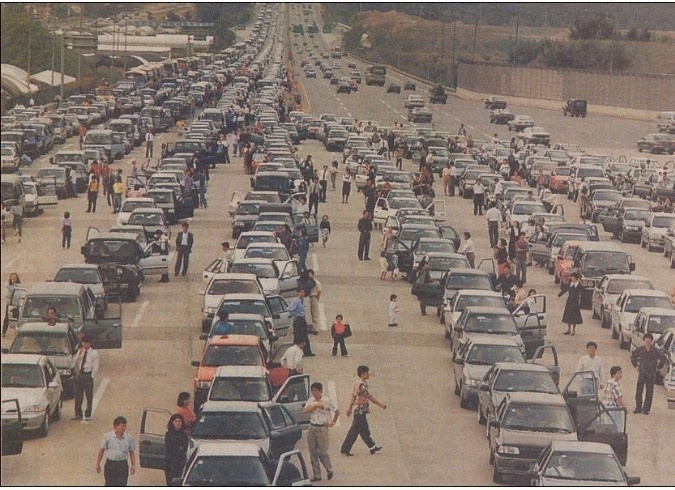Unusual Chuseok Holidays of the Past
Written by Cho Namhee
According to the lunar calendar, this year the 15th day of the 8th lunar month (Chuseok Day) falls on September 24, and as a consequence, the full Chuseok holiday is marked on calendars in red from September 23 to 26. The long holiday, also known as Hangawi (한가위, meaning “big mid-autumn”), is one of the two biggest national holidays in Korea.
Interestingly, Chuseok (추석) was a one-day holiday up until 1985, and by 1989, it had become a three-day break with Chuseok Day sandwiched in the middle. Since then, conventionally, many families living in the nation’s capital and its surrounding cities away from their hometowns could spare a few days for “the golden holidays” to visit their families back home. However, the modern scenery of Chuseok has changed considerably for many reasons. Therefore, instead of depicting typical scenes of this traditional Korean holiday, here are some of the indelible Chuseok holidays from the past that can never be forgotten.
Typhoon Sarah 1959
Forming on September 12 and dissipating a week later, Typhoon Sarah was the 14th typhoon of the year and was recorded as one of the deadliest typhoons to hit the Korean Peninsula in recorded history. It penetrated the mainland of Korea on September 17, the day of Chuseok. The impact of the typhoon was even more fatal since there were no forecast systems like today’s at the time. Many people realized that it was a typhoon only after their houses and property had been leveled and were left strewn with debris. In figures, Sarah claimed 373,459 victims, including 849 deaths, 2,533 injuries, and 206 missing. Furthermore, 11,704 vessels, 10,000 houses, and 200,000 hectares of farmland were damaged, a loss of approximately $4.5 million in 1959 US dollars.
Daejeon Expo 1993
The Daejeon Expo was the first specialized exposition held in Korea, and it ran for three months from August 7 to November 7, 1993. Under the theme “The Challenge of a New Road of Development,” the expo was run by participants from 108 nations and 33 international organizations, and attracted 14 million visitors from home and abroad. With the Chuseok holiday taking place during the exhibition, the expressway between Seoul and Daejeon was overcrowded with vehicles heading to either the Expo or back home. As a consequence, travelers had to spend at least 15 hours to get to Daejeon from Seoul.
1996 Gangneung Submarine Infiltration
Gangwon Province experienced its worst Chuseok holiday when a North Korean submarine was found stranded on the east coast near Jeongdongjin on September 18, 1996. Of the 25 North Korean infiltrators, one was captured alive, 11 were killed by their group, and 13 were killed by the ROK Army. During the 49-day manhunt, four civilians and 12 ROK soldiers died, with 27 soldiers wounded. The army imposed a curfew in the eastern part of Gangwon Province and stepped up inspections.
2016 Gyeongju Earthquake
A 5.4 magnitude earthquake, the second strongest earthquake ever to occur in the country (only the 2017 Pohang earthquake was stronger), occurred in Gyeongju on September 12, 2016, just two days before Chuseok. The city is well known for its historical remains and heritage sites from the Silla Dynasty. Due to the impact of the first shock and a series of aftershocks, the city was designated as a special disaster area.
With that, I hope you have a pleasant Chuseok holiday and do not experience any extraordinary misfortunes like these. Have a happy and safe Chuseok!
The Author
Cho Namhee, an over-zealous sports fan, is a free spirit who calls Gwangju home. He studies communications at Chonnam National University and works for the 18th FINA World Championships, Gwangju 2019.



